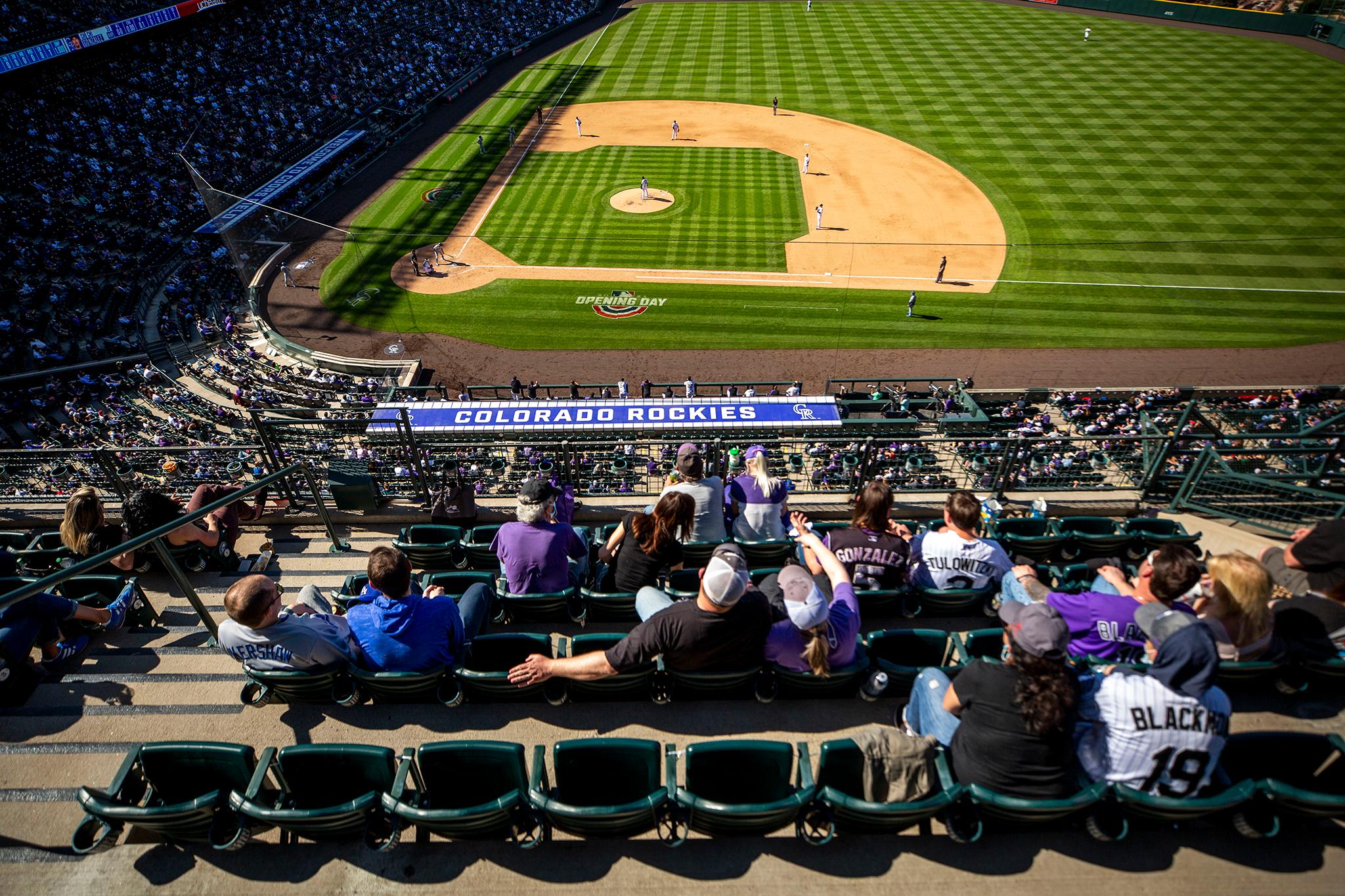
A long time ago in a lower downtown not too far away, well before the roar of the crowd at Coors Field, the area was home to an entirely different kind of roar.
“LoDo was a triceratops hang out way before it became expensive rent and cool young people,” said Brady O’Neil, manager of promotions and events operations for the Colorado Rockies.
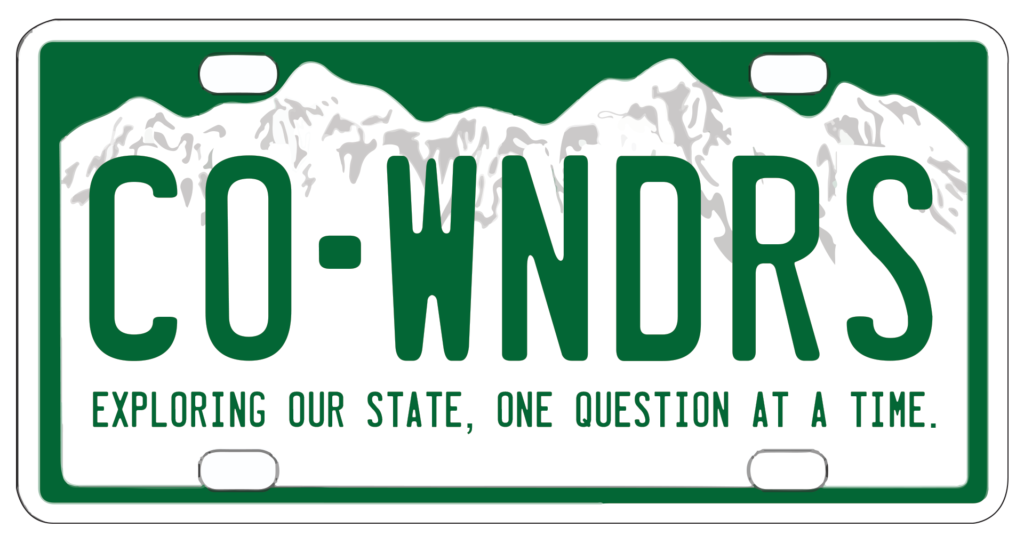
We’re talking pretty far back. “Jurassification,” not gentrification. Fast forward to 1993, when construction crews digging up the corner of 20th and Blake streets for the forthcoming baseball stadium found something of the prehistoric variety.
“I think they found a dinosaur egg, didn’t they?” said Mike Rynearson of Littleton, who was hanging out a downtown bar before a Rockies game.
Well, it wasn’t an egg. Dinosaur bones were found during the building of the Rockies’ home. And then the trail went cold, probably lost in the excitement of the introduction of Dinger, the purple triceratops mascot. Denverite Jeremy Schnieder has struggled to get answers about the fossils. What kind of dino did the bones belong to? Where are they kept today?
“I’ve been to many Rockies games and I would ask various people there, and nobody knew anything about it,” Schneider said. “I was just starting to get to the point where I was thinking that it was just a made-up story, that it was just something to create hype.”
The hype we’ll leave to Dinger. The answer though lies in the basement of the Denver Museum of Nature and Science. In the unquenched construction boom around Denver, the museum is often the first place people go whenever they find fossils, said dinosaur curator Joe Sertich.
With everyone digging around, “there’s a really good chance those shovels are gonna hit a fossil,” he said. “So we’re hitting triceratops (fossils), we’re finding duck-billed dinosaurs, we’re finding mammals that existed right after the dinosaurs went extinct, all of that is right under our feet, in our backyards here in the Denver area.”
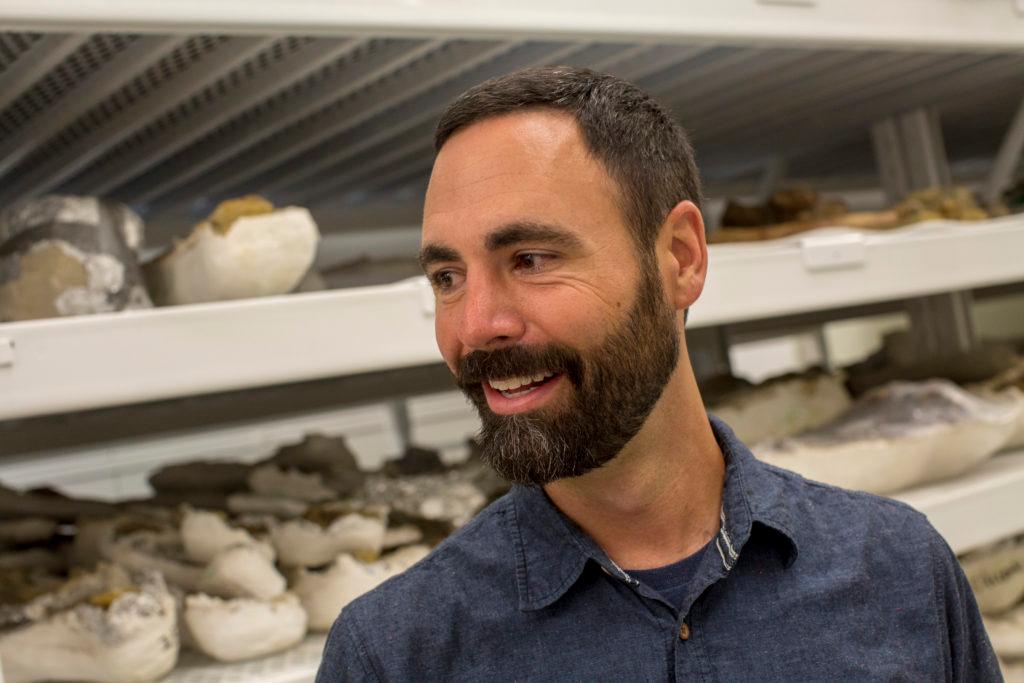
The Denver Metro has been “known to produce fossils, really all the way back to the 1800s.” He said some of the first fossil finds were located in the Highland neighborhood.
“That was originally identified as a weird form of bison because we didn’t know what horned dinosaurs were at the time. It was later identified as a triceratops chunk. But that whole area around Confluence Park, around Lower Downtown, is full of dinosaur history.”
The dinosaur bones found at Coors Field are kept in the lower bowels of the museum's climate-controlled paleontology collection space. The box is labeled “Dinger” and is just big enough to hold a watch.
“That’s Dinger,” Sertich said as he showed off a small grouping of bones. “So, our purple Colorado Rockies mascot is based on this little, four-inch rib and some fragments.”
All this buzz around dinosaur bones found at Coors Field and they turn out to be just a little rib bone and some fragments?
“Yeah, I’d say Dinger is not really an important discovery for science, but in terms of pop culture it might be the biggest discovery in Denver’s history,” Sertich deadpanned.
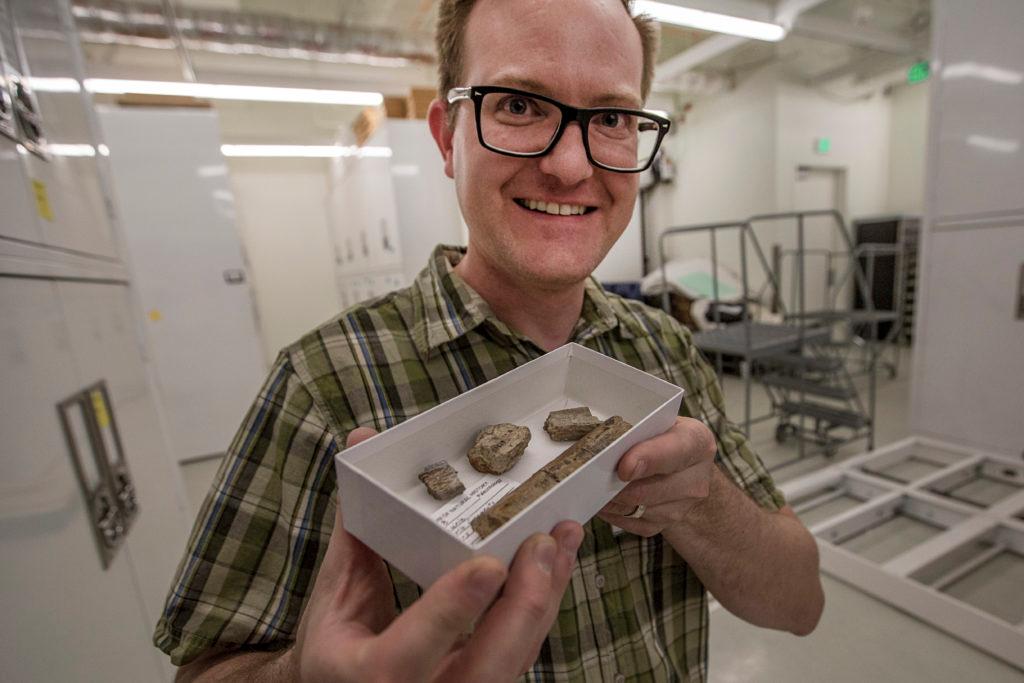
No one can say what kind of dinosaur the rib belonged to because they’re typically identified by skulls. But we do know it was probably a plant eater, which means it could be a triceratops. And that’s good enough for Jeremy Schneider.
“At least we know it exists,” he said. “At least we know there was something to the story.”
Even though we’ll never know what kind of dinosaur the rib belonged to, the Rockies’ O’Neil said the team went with a triceratops mascot because it made sense, given other confirmed findings of the plant-eating beast in the area.
“When Dinger goes to All-Star games, you’ll hear fans say, ‘Why is he a dinosaur?’” O’Neil said. “And then you say, well, because they found bones while building Coors Field. The shock on their face, it’s really cool to see. It’s totally part of history and a part of this region that makes us special. I mean, no one else has dinosaurs in their backyard.”
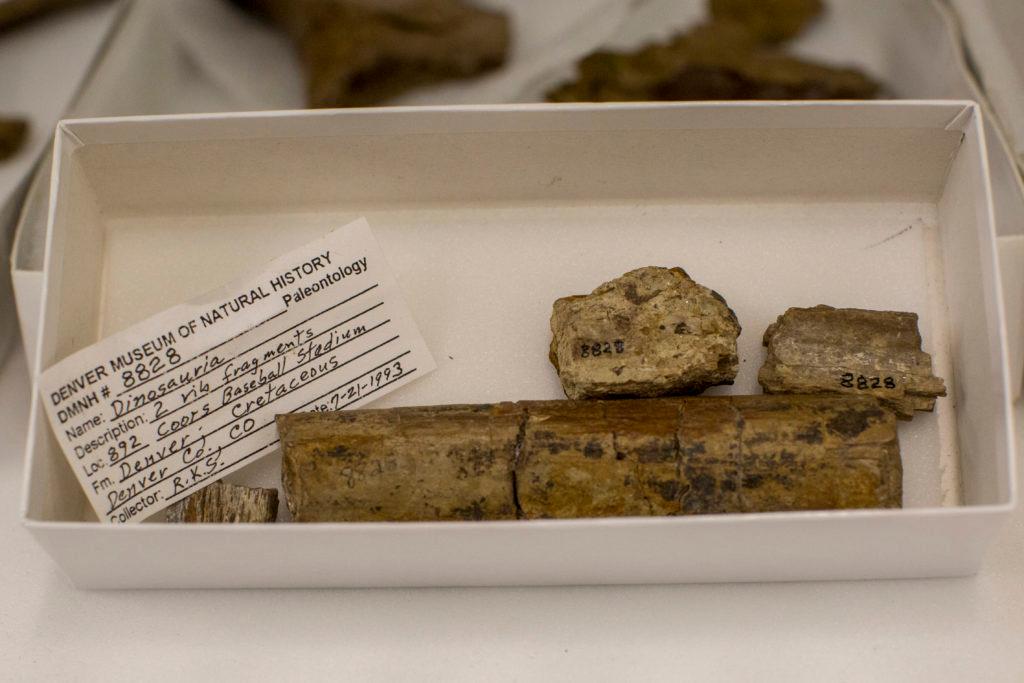
For Jaimie Reams of Boulder, who spends most of her summer selling peanuts and bottled water outside Coors Field, the dinosaur connection makes the team even more endearing to fans.
“Baseball and dinosaurs,” she said. “It doesn’t get much cooler than that!”
And when I told Rynearson that it wasn’t an egg that was found at Coors Field, but dinosaur bones instead, he said, “I like it!”
“Now, all (the Rockies) have to do is win.”








